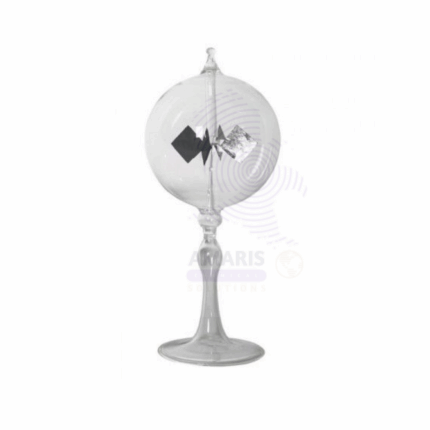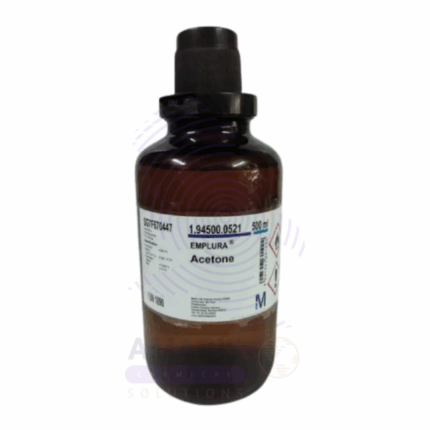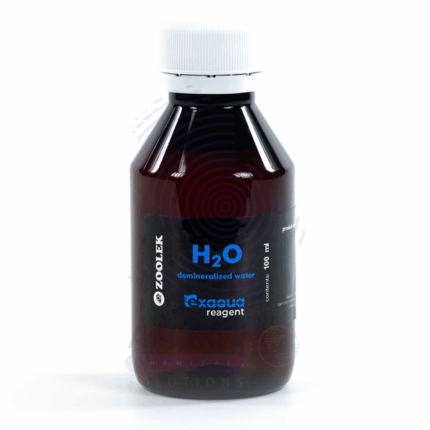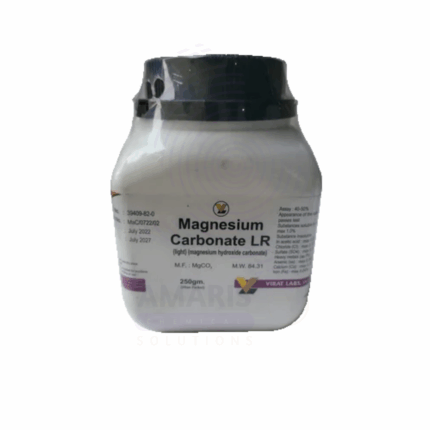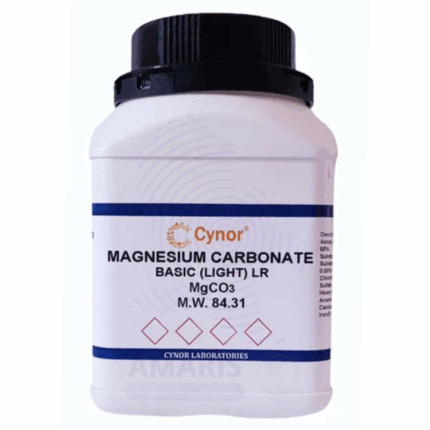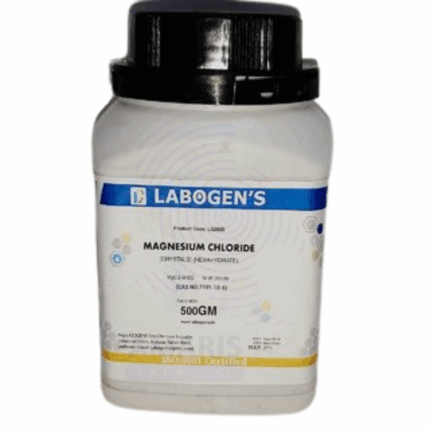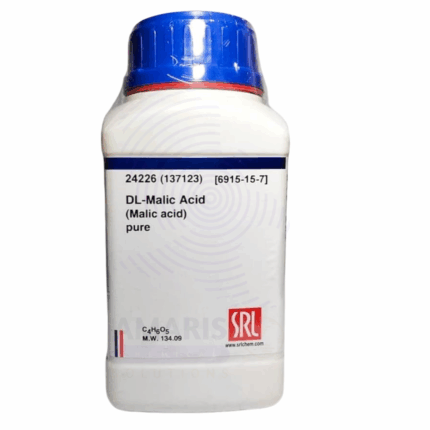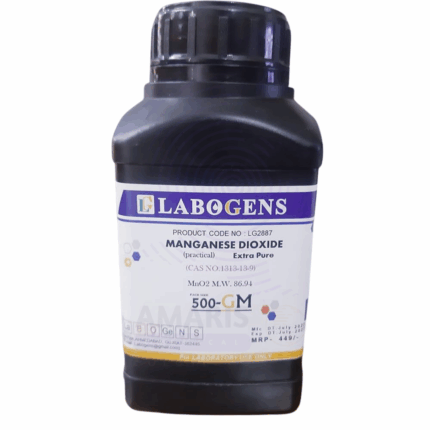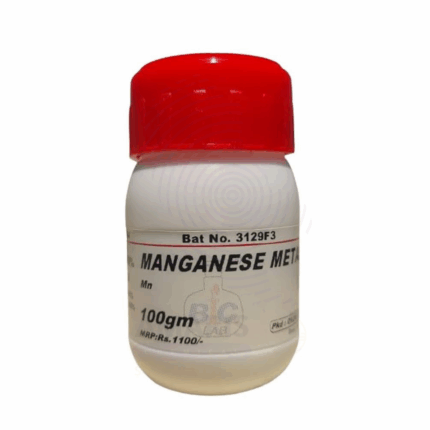Mineral Lick Rock Salt Extra Pure
$ 20.21 Original price was: $ 20.21.$ 20.13Current price is: $ 20.13.
Mineral Lick Rock Salt Extra Pure is a high-purity, natural crystalline salt product specially processed for scientific, veterinary, and nutritional applications. Composed primarily of sodium chloride (NaCl), this form of rock salt may also contain trace essential minerals such as calcium, magnesium, and potassium in controlled amounts. Its extra pure grade ensures minimal contaminants, making it ideal for controlled laboratory experiments, animal nutrition studies, and formulation testing where purity and consistency are critical.
In agricultural research and veterinary science, Mineral Lick is commonly used to study electrolyte balance, mineral supplementation, and livestock behavior related to mineral intake. The solid, stable nature of the product allows for long shelf life and ease of handling, and it may also be used in comparative tests involving natural versus synthetic mineral supplements. For best results, it should be stored in a dry, cool place away from moisture.
Mineral Lick Rock Salt Extra Pure
Primary Uses
- Livestock nutrition supplement for essential minerals like sodium and chloride.
- Prevention of mineral deficiency diseases in farm animals.
Secondary Uses
- Used in wildlife reserves to attract and feed wild animals.
- Occasionally used in veterinary formulations and mineral premixes.
| PACK SIZE |
500 grams Plastic Tin |
|---|
1. Basic Identification Attributes
- Chemical Name: Sodium Chloride (commonly known as Rock Salt, Mineral Lick)
- CAS Number: 7647-14-5
- HS Code: 2501.00.10 (Natural sodium chloride, rock salt)
- Molecular Formula: NaCl
- Synonyms: Rock Salt, Halite, Common Salt, Mineral Lick Salt, Sodium Chloride
2. Physical & Chemical Properties
- Physical State: Solid (crystalline blocks or lumps)
- Color & Odor: White to grayish; odorless
- Boiling Point: 1,413 °C
- Melting Point: 801 °C
- Density: ~2.17 g/cm³
- Solubility: Soluble in water; insoluble in most organic solvents
- pH Level: Neutral (7.0 for 1% solution)
- Vapor Pressure: Not applicable (non-volatile solid)
- Flash Point: Not applicable (non-flammable)
- Autoignition Temperature: Not applicable
- Viscosity: Not applicable
3. Safety & Hazard Attributes
- Hazard Class (GHS): Not classified as hazardous
- NFPA Ratings:
- Health: 1
- Flammability: 0
- Reactivity: 0
- Exposure Limits:
- OSHA PEL: Not established
- ACGIH TLV: Not established
- Reactivity: Stable; may react with strong acids to release hydrogen chloride gas
4. Storage & Handling Attributes
- Storage Conditions: Store in a dry, well-ventilated area; protect from moisture
- Incompatible Materials: Strong acids (e.g., sulfuric acid), strong oxidizers
- Container Type: Polyethylene bags, plastic drums, fiberboard containers
- Shelf Life: Indefinite if stored properly
- Special Handling Requirements: Wear gloves and safety goggles in dusty environments; avoid inhalation of dust
5. Regulatory & Compliance Attributes
- Regulatory Status:
- EPA: Not listed as a hazardous substance
- REACH: Registered
- OSHA: Not regulated as hazardous
- DOT: Not a hazardous material for transport
- Hazard Symbols: None required under GHS
- Transportation Restrictions: UN Number – Not regulated; not classified as dangerous goods
- Waste Disposal Method: Dispose in accordance with local and national regulations; non-hazardous waste classification
6. Environmental & Health Impact
- Ecotoxicity: High concentrations may be harmful to aquatic life due to salinity stress
- Persistence in Environment: Persistent; does not degrade but may dilute in water systems
- Carcinogenicity/Mutagenicity: Not classified as carcinogenic or mutagenic
- Biodegradability: Not biodegradable; naturally occurring inorganic compound
SAFETY PRECAUTIONS
Personal Protective Equipment (PPE):
- Wear a lab coat, nitrile gloves, and safety goggles.
- Use a dust mask if handling powder or crushed form.
Handling:
- Avoid inhaling dust and contact with eyes.
- Handle with clean, dry tools.
- Wash hands thoroughly after handling.
Storage:
- Store in a dry, cool, and well-ventilated place.
- Keep the container tightly sealed to prevent moisture absorption.
- Avoid exposure to acids or highly humid environments.
FIRST AID MEASURES
Inhalation:
- Move people to fresh air.
- Seek medical attention if breathing becomes difficult.
Skin Contact:
- Wash skin with water.
- Remove contaminated clothing.
- Seek medical advice if irritation develops.
Eye Contact:
- Rinse immediately with plenty of water.
- Remove contact lenses if present.
- Continue rinsing and seek medical advice if irritation persists.
Ingestion:
- Rinse mouth with water.
- Do not induce vomiting.
- Seek medical attention if symptoms appear.
FIRE FIGHTING MEASURES
Flammability:
- Non-flammable material.
Extinguishing Media:
- Use any suitable media for surrounding fire (e.g., water spray, foam, dry chemical, CO₂).
Hazardous Combustion Products:
- Not applicable—does not burn.
Firefighter Protection:
- Standard protective equipment; no special precautions required.


 Preservatives(food)
Preservatives(food) Flavor Enhancers
Flavor Enhancers Acidulants
Acidulants Sweeteners
Sweeteners Antioxidants
Antioxidants Colorants(food)
Colorants(food) Nutraceutical Ingredients (food)
Nutraceutical Ingredients (food) Nutrient Supplements
Nutrient Supplements Emulsifiers
Emulsifiers
 Collectors
Collectors Dust Suppressants
Dust Suppressants Explosives and Blasting Agents
Explosives and Blasting Agents Flocculants and Coagulants
Flocculants and Coagulants Frothers
Frothers Leaching Agents
Leaching Agents pH Modifiers
pH Modifiers Precious Metal Extraction Agents
Precious Metal Extraction Agents
 Antioxidants(plastic)
Antioxidants(plastic) Colorants (Pigments, Dyes)
Colorants (Pigments, Dyes) Fillers and Reinforcements
Fillers and Reinforcements Flame Retardants
Flame Retardants Monomers
Monomers Plasticizers
Plasticizers Polymerization Initiators
Polymerization Initiators Stabilizers (UV, Heat)
Stabilizers (UV, Heat)
 Antifoaming Agents
Antifoaming Agents Chelating Agents
Chelating Agents Coagulants and Flocculants
Coagulants and Flocculants Corrosion Inhibitors
Corrosion Inhibitors Disinfectants and Biocides
Disinfectants and Biocides Oxidizing Agents
Oxidizing Agents pH Adjusters
pH Adjusters Scale Inhibitors( water)
Scale Inhibitors( water)
 Antioxidants(cosmetic)
Antioxidants(cosmetic) Emollients
Emollients Fragrances and Essential Oils
Fragrances and Essential Oils Humectants
Humectants Preservatives
Preservatives Surfactants(cosmetic)
Surfactants(cosmetic) Thickeners
Thickeners UV Filters
UV Filters
 Fertilizers
Fertilizers Soil Conditioners
Soil Conditioners Plant Growth Regulators
Plant Growth Regulators Animal Feed Additives
Animal Feed Additives Biostimulants
Biostimulants Pesticides (Herbicides, Insecticides, Fungicides)
Pesticides (Herbicides, Insecticides, Fungicides)
 Active Pharmaceutical Ingredients (APIs)
Active Pharmaceutical Ingredients (APIs) Excipients
Excipients Solvents(pharmaceutical)
Solvents(pharmaceutical) Antibiotics
Antibiotics Antiseptics and Disinfectants
Antiseptics and Disinfectants Vaccine Adjuvants
Vaccine Adjuvants Nutraceutical Ingredients (pharmaceutical)
Nutraceutical Ingredients (pharmaceutical) Analgesics & Antipyretics
Analgesics & Antipyretics
 Analytical Reagents
Analytical Reagents Solvents(lab)
Solvents(lab) Chromatography Chemicals
Chromatography Chemicals Spectroscopy Reagents
Spectroscopy Reagents microbiology-and-cell-culture-reagents
microbiology-and-cell-culture-reagents Molecular Biology Reagents
Molecular Biology Reagents Biochemical Reagents
Biochemical Reagents Inorganic and Organic Standards
Inorganic and Organic Standards Laboratory Safety Chemicals
Laboratory Safety Chemicals Specialty Laboratory Chemicals(Special Laboratory Equipment)
Specialty Laboratory Chemicals(Special Laboratory Equipment)
 Demulsifiers
Demulsifiers Hydraulic Fracturing Fluids
Hydraulic Fracturing Fluids Scale Inhibitors(oil)
Scale Inhibitors(oil) Surfactants(oil)
Surfactants(oil) Drilling Fluids
Drilling Fluids
 Dyes and Pigments
Dyes and Pigments Bleaching Agents
Bleaching Agents Softening Agents
Softening Agents Finishing Agents
Finishing Agents Antistatic Agents
Antistatic Agents
 Admixtures
Admixtures Waterproofing Agents
Waterproofing Agents Sealants and Adhesives
Sealants and Adhesives Curing Compounds
Curing Compounds Concrete Repair Chemicals
Concrete Repair Chemicals Anti-Corrosion Coatings
Anti-Corrosion Coatings
 Surfactants(cleaning)
Surfactants(cleaning) Builders
Builders Enzymes
Enzymes Solvents (Cleaning)
Solvents (Cleaning) Fragrances
Fragrances
 Electronic Chemicals
Electronic Chemicals Catalysts
Catalysts Lubricants
Lubricants Photographic Chemicals
Photographic Chemicals Refrigerants
Refrigerants Automotive chemicals
Automotive chemicals Pyrotechnic Chemicals
Pyrotechnic Chemicals
 Biodegradable Surfactants
Biodegradable Surfactants Bio-based Solvents
Bio-based Solvents Renewable Polymers
Renewable Polymers Carbon Capture Chemicals
Carbon Capture Chemicals Wastewater Treatment Chemicals
Wastewater Treatment Chemicals
 Pigments
Pigments Solvents(paint)
Solvents(paint) Specialty Coatings
Specialty Coatings Binders/Resins
Binders/Resins Additives
Additives Driers
Driers Anti-Corrosion Agents
Anti-Corrosion Agents Functional Coatings
Functional Coatings Application-Specific Coatings
Application-Specific Coatings
 Fresh Herbs
Fresh Herbs Ground Spices
Ground Spices Whole Spices
Whole Spices Spice Blends
Spice Blends Dried Herbs
Dried Herbs
 Leavening Agents
Leavening Agents Dough Conditioners
Dough Conditioners Flour Treatments
Flour Treatments Fat Replacers
Fat Replacers Decoratives
Decoratives Preservatives(baking)
Preservatives(baking)
 Plasticizers & Softeners
Plasticizers & Softeners Reinforcing Agents
Reinforcing Agents Adhesion Promoters
Adhesion Promoters Vulcanizing Agents
Vulcanizing Agents Antidegradants
Antidegradants Blowing Agents
Blowing Agents Fillers & Extenders
Fillers & Extenders Accelerators & Retarders
Accelerators & Retarders
